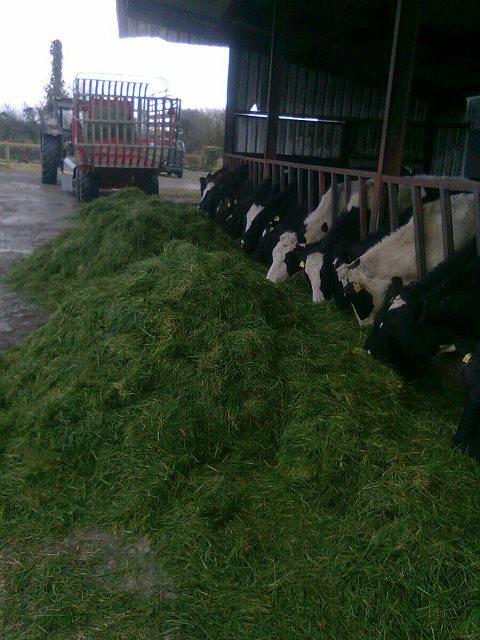A zero-grazing system is where grass is mechanically mown and brought to cattle.
Used for many years in parts of mainland Europe, it is currently used on only a small number of Irish farms.
Its appeal is that it allows cattle to consume fresh grass from fields that are too far away, or are separated by busy road, to be included in the grazing rotation.
Zero-grazing can also play a role when utilising fields too wet for grazing, provided the machines employed have sufficiently wide wheels to safely distribute their load.
In some cases it is likely that the herd will graze conventionally for most of the season, but receive zero-grazed grass when useful.
When zero-grazing is employed, it needs to be part of a “rotational grazing” system, with excellent grassland management entailing good grass measurement and management practices such as using the “grazing wedge” to ensure effective grassbudgeting.
Highly digestible grass, grazed by the cow, will virtually always be the most cost-effective feed. Mown grass is prone to heating, which would reduce its feeding value quickly.
Consequently, it is important that grass receives the minimal amount of bruising or laceration before being quickly transported to the feed trough.
That’s why zero-grazing is usually undertaken daily with a forage-wagon rather than, for example, a direct-cut or precision chop harvester.
It is also important that feed troughs are emptied daily. Cattle can “push grass away” from the feed trough while they are eating it and it may need to be pushed back to them more than once daily.
Finally, ensure that zero-grazed cattle have sufficient trough space width, so that they can genuinely eat to appetite and achieve a high intake.
Zero-grazing is a higher cost system than conventional grazing, and will mean greater volumes of slurry to be spread. However, it has the potential to produce high yields of leafy grass within a well-managed system.
By Padraig O’Kiely, Teagasc Animal and Grassland, Research and Innovation Programme. This article first appeared in the Teagasc publication Today’s Farm.
